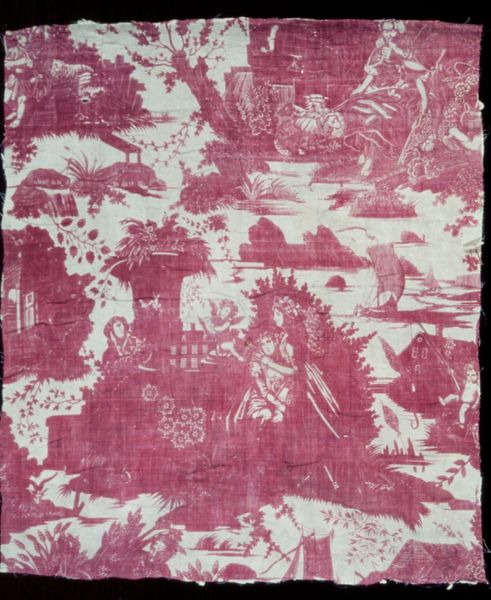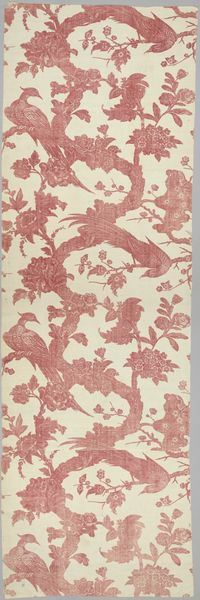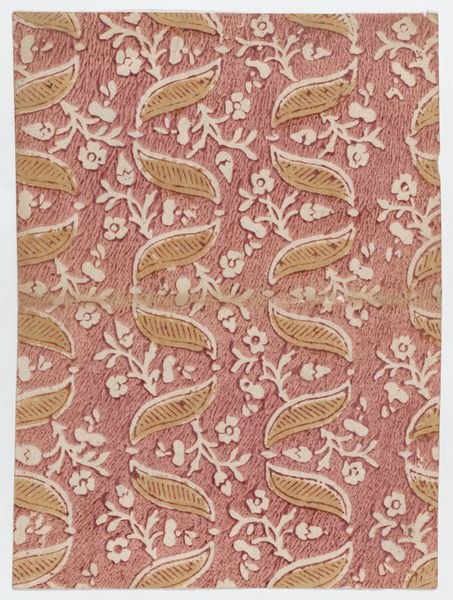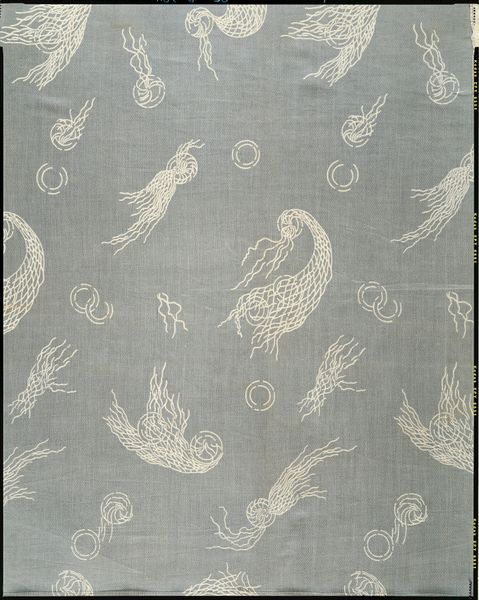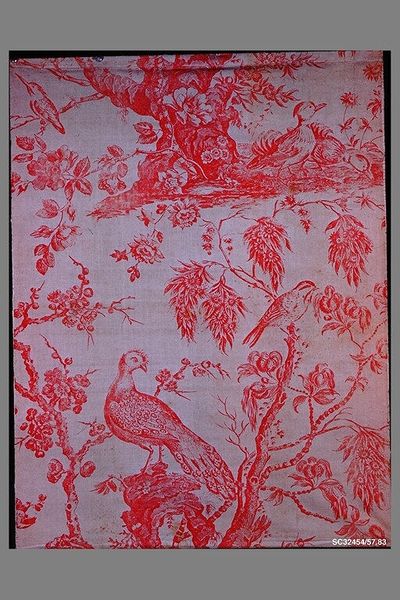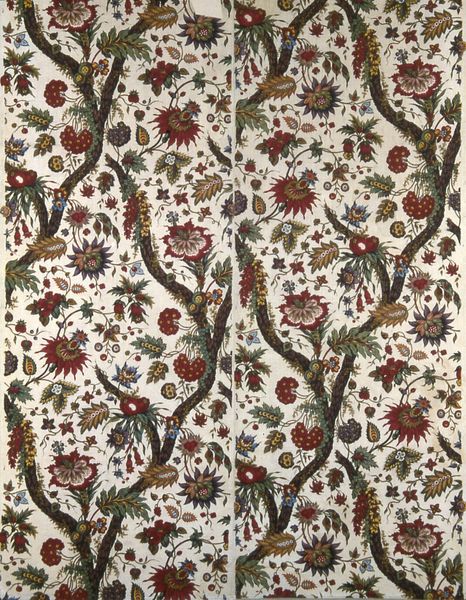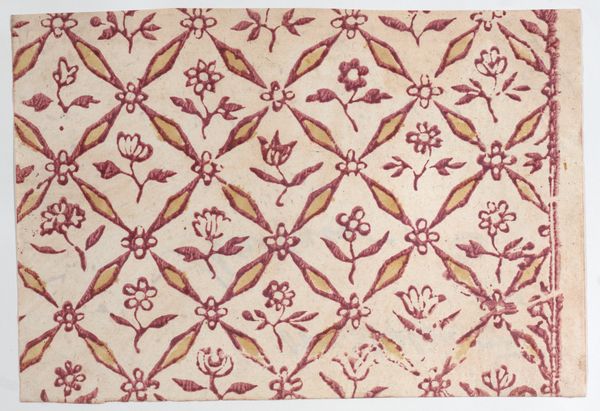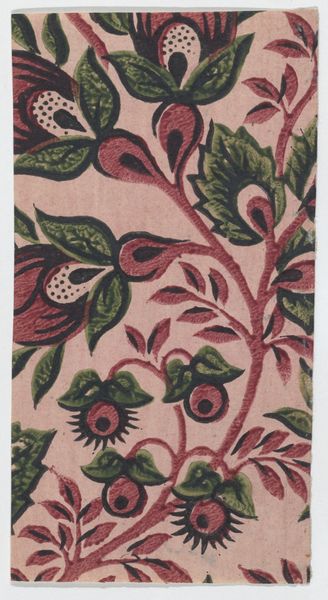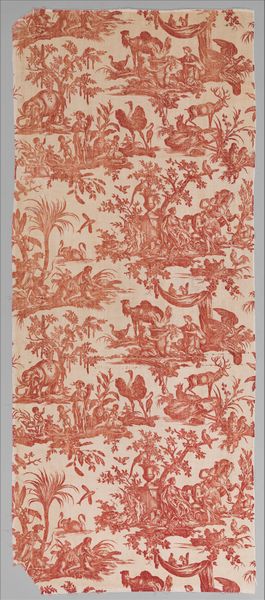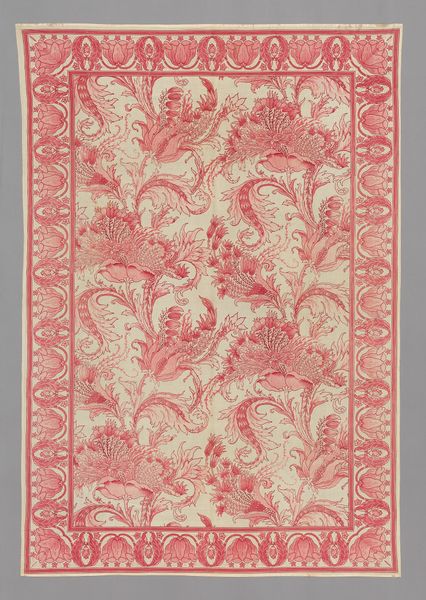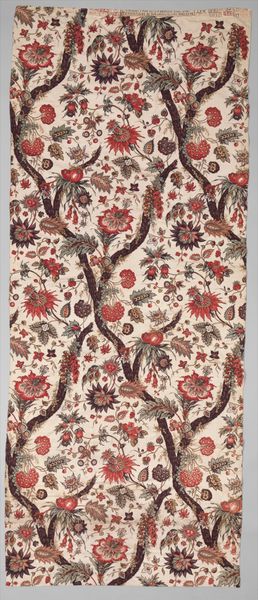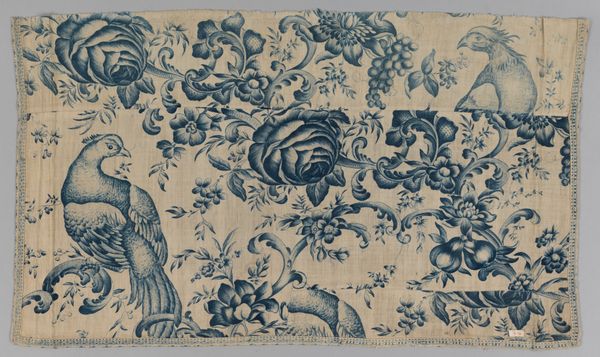
print, textile, sculpture
# print
#
landscape
#
textile
#
organic pattern
#
sculpture
#
decorative-art
#
realism
Dimensions: L. 45 x W. 39 1/2 inches (loom width) 114.3 x 100.3 cm
Copyright: Public Domain
Curator: Let’s take a look at this fascinating textile work, aptly titled "Piece," created sometime between 1760 and 1770. It's currently housed here at the Metropolitan Museum of Art. Editor: My immediate impression is one of opulent density. The whole field of vision is taken up by the looping patterns of the design, leaving little breathing room in the ground between the elements. It must feel quite grand at scale! Curator: It’s interesting you say that, because even in this close view we sense something archetypal about the layout. Consider the placement of birds, how the mirroring might echo ideas of symmetry and balance… could there be something more significant at play? Editor: Maybe. I’m more fascinated by the material processes at work here. It seems likely this was printed using some sort of transfer process onto the textile. That limited palette is probably the key – how do we determine the dye source, the labor, and how that choice impacted the broader appeal and use of it in interiors, or clothing? Curator: That limited color palette speaks volumes to me. Burgundy often symbolizes passion and intensity. Given its context in decorative art during that era, one could read its placement as a conscious elevation of private spaces through the careful selection of pigment…a subtle, luxurious revolt in visual form, you could almost say. Editor: Fascinating, sure, but my thoughts run to commerce! Did the maker utilize a new faster method? Was it imported, mimicking an Asian textile? Those questions about design and material make "luxury" knowable for ordinary people. What makes something a must-have object for that period, materially speaking? Curator: Perhaps it's a blend of both - the symbolic resonance of these bird motifs interlaced with the bloom-laden tendrils is not happenstance. They recall verdant utopias that royalty enjoyed through tapestries! I wouldn’t be shocked if an aristocratic house wanted this in their bedroom, given all the cultural touchstones at play. Editor: And I find the practical reality equally as tantalizing—what was the labor involved in producing the template, treating and mordanting the cloth, in mixing that beautiful shade? Did it crack, peel, or fade quickly with washing and sunlight? These aren’t "decorative" concerns, but the real story for objects intended for functional, decorative use. Curator: Well, this piece reminds me to look beneath appearances for how traditions weave themselves through daily life. Editor: And for me, it reiterates that to truly grasp the impact of art, we need to see how it came into being, how labor makes the dreams tangible.
Comments
No comments
Be the first to comment and join the conversation on the ultimate creative platform.
